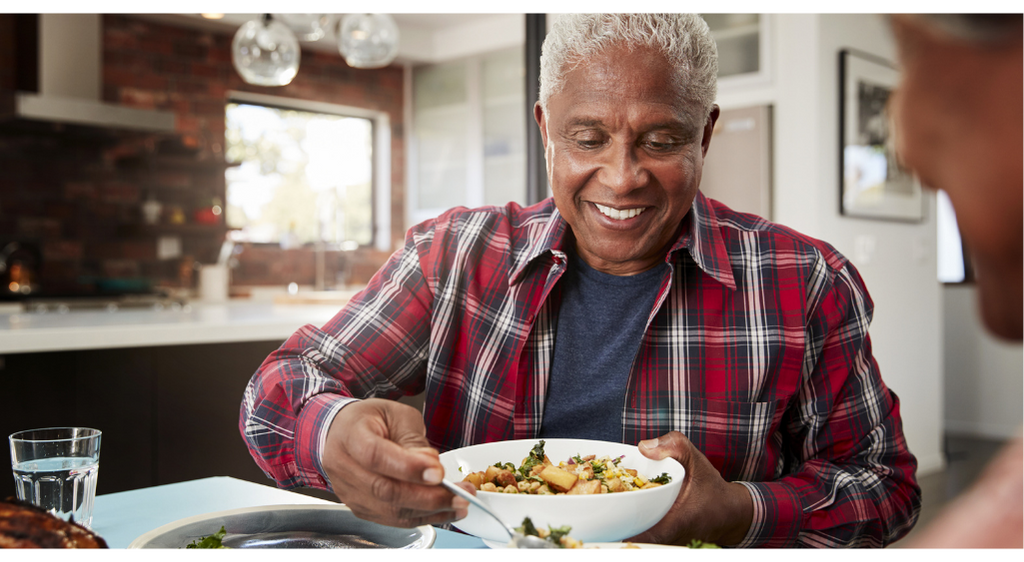
Protein is an essential nutrient for any well-balanced diet. Read on to learn why protein is important, especially for seniors, and what foods we recommend.
Why is protein important for seniors?

For any balanced diet, protein is an important nutrient to regularly incorporate into meals. Protein is most well known for contributing to muscle growth and repair, but has other benefits as well. Protein is a building block for cell growth in hair, skin, nails, bones and internal organs. Protein also helps maintain fluid balance in the body which is important for hydration and normal blood pressure. Additionally, protein is essential for healing from injuries, keeping fluid levels balanced and maintaining healthy vision.
For older adults, protein-rich foods, along with exercise, are a great way for maintaining muscle mass and a healthy weight, which in turn, help maintain activities of daily living and prevents chronic illnesses such as diabetes. The right amount of protein can also make significant contributions to your overall health.
In a 2018 study by the Gerontological Society of America, researchers found that seniors in the control group who ate the most protein were “30 percent less likely to become functionally impaired than those who ate the least amount.” Their work suggests that lower protein consumption, coupled with a sedentary lifestyle, could contribute to “deteriorated muscles, compromised mobility and slower recovery from illness.”
Eating regular, well-balanced meals with adequate protein is especially important as we age in order to ensure that the body doesn't break down the muscle we already have. Decreased appetite and overall decreased intake are a common risk factor for muscle breakdown, so it is important to make sure you are eating a balanced diet to ensure the proper amount of nutrition. These foods are not meant for diets that “starve the body,” as that may be counterproductive to your goals. First and foremost, make sure that you are eating enough and supplement protein into your existing diet. We will discuss how much you need later in this article.
Best Protein-Rich Foods for Seniors
It is important to know what protein you should be adding to your diet. There are many high-protein meals, snacks and shakes out there, but some are high in fat, sodium or other nutrients. Below, we list some of our favorite, healthiest sources of protein:
Lean Meat
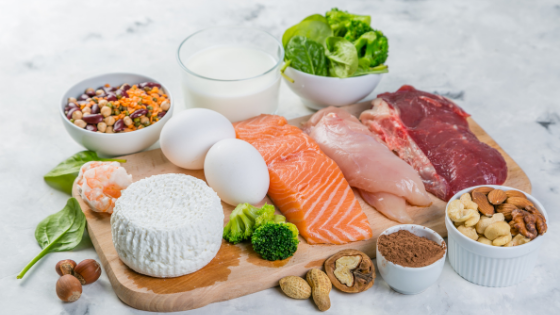
With lower fat and therefore lower calorie content, lean meat is an excellent source of protein for seniors. The USDA defines lean as having less than 10 grams of fat and 4.5 grams or less of saturated fat per 3.5 ounce (100-gram) serving.
There are plenty of delicious options that are protein-rich and worth incorporating into your diet. Some examples of lean meat include:
- Skinless chicken and turkey
- Lean cuts of beef (the loin and round cuts)
- Pork loin
Along with high protein content, lean meats have several other health benefits as well. Chicken, for example, is a great source of selenium, vitamins B3 and B6 and choline.
Selenium has antioxidant properties that help prevent cell damage and boosts the immune system. Meanwhile, vitamins B3 and B6 help the body convert carbohydrates into glucose for sustained energy and choline helps maintain and improve nerve function, while also serving as an anti-inflammatory.
With cuts of red meat like beef, pork and bison the benefits are different, but also beneficial to your overall health. Red meat is a rich source of iron, zinc, B vitamins and, of course, protein. Guidelines and research around appropriate consumption of red meat continue to evolve, however it is safe to say that a moderated diet is always a good idea. Existing guidelines which recommend avoiding consuming red meat daily are still well advised, particularly for those with high cholesterol and high blood pressure.
Iron is an essential mineral. Red blood cells contain iron, and managing iron levels helps eliminate fatigue, boosts hemoglobin and helps the immune system properly function. Like iron, zinc is another crucial mineral. B6 and B12 vitamins are also found in red meat. B6 vitamins are great for the immune system while B12 vitamins benefit the nervous system and energy sustainment.
Like all vitamins and nutrients, these should be considered when choosing your balanced diet. Ideally, we get all of the building blocks we need through foods and not through pills or supplements.
Fish
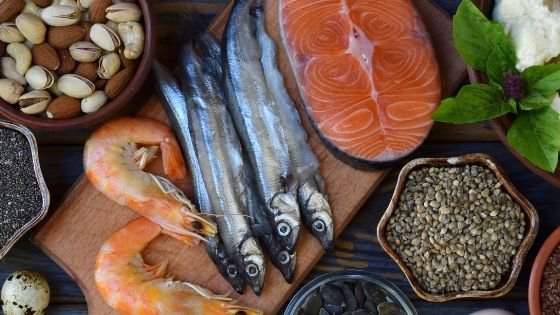
As one of the lowest-calorie yet protein-rich foods on our list, fish is a great option for seniors to boost their protein intake. You may already have a favorite, but there are plenty of fish in the sea to keep your protein options open. Here are some of our favorites:
- Arctic Char
- Cod
- Halibut
- Tuna
We could add so many more to this list, but the fish options here are loaded with protein, low in calories and packed with many other important nutrients for your body. Fish also makes for great food for seniors with diabetes. Let’s look at arctic char as an example.
Arctic char is a relatively inexpensive fish loaded with protein. Per Seafood Source, a 3.5-ounce serving of arctic char contains about 20.2 grams of protein with only 154 calories. However, arctic char has a relatively high fat content clocking in at about 8.1 grams, so it is best to eat this fish in moderation. Nonetheless, arctic char is a delicious, nutrient-packed alternative.
Second on the list is cod. This tasty coldwater fish has flaky white meat that is low in calories and fat. According to Healthline, a three ounce serving of cod contains 16 grams of protein and just 72 calories. Cod is also a great source of B vitamins and omega-3 fatty acids that benefit heart health. For those who do not like a strong “fishy flavor” this mild tasting fish is a good choice.
Next, nutrient-packed halibut is another great option to include in your diet. In a three-ounce serving, halibut contains about 19 grams of protein and 91 calories. While it has a higher fat content than cod, halibut is loaded with omega-3 fatty acids (also called “good fats” or “good cholesterol”) which make it an effective anti-inflammatory and a great food for your brain. However, you should eat halibut in moderation due to its high mercury levels.
Last on our list is tuna, a delectable and popular nutrient-rich fish. At three ounces, yellowfin tuna packs about 25 grams of protein with just 110 calories. Due to its high amounts of selenium, tuna also has antioxidant properties that promote healthy cell growth. Like other fish on this list, tuna is also a great source of B vitamins, omega-3 fatty acids, magnesium and potassium. However, the tuna we reference here is not canned tuna. While a great option financially, canned tuna can be high in mercury. Because of this, it’s important to eat tuna, both regular and canned, to avoid mercury toxicity.
Low-Fat Dairy Products
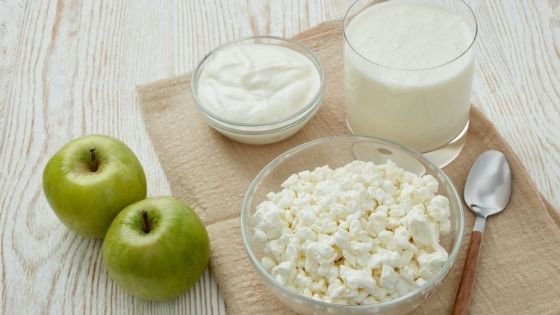
Other nutrient-rich and protein-packed foods to incorporate into your diet are low-fat dairy products. Most dairy products can contain levels of fat, but our list has some low-fat or fat-free options you can try:
- Low-fat cottage cheese
- Low-fat yogurt
- Skim milk
One cup of low-fat cottage cheese contains about 163 calories, 28 grams of protein and 2.3 grams of fat. While loaded with protein, cottage cheese has a number of other nutritional benefits too. Cottage cheese contains high levels of selenium, B vitamins, vitamin A, magnesium, potassium, iron and, of course, calcium.
Made from the curds of pasteurized cow’s milk, cottage cheese can be made with various levels of fat. With its high-protein content and other benefits, cottage cheese is a popular nutritional source for athletes and weight loss plans.
Next on our dairy list is low-fat yogurt. There are many variations of yogurt from Greek yogurt to fruit-infused yogurt. For nutritional purposes, we will discuss plain low-fat yogurt. Per the USDA, low-fat yogurt contains 154 calories, 3.8 grams of fat and 12.9 grams of protein in a one cup serving. Yogurt is also a great source of calcium, probiotics and various vitamins.
Last but not least is skim milk, a low-calorie and low-fat option that comes loaded with protein. Via nutrionix.com, one cup of skim milk yields 83 calories, 8.3 grams of protein and a very low 0.2 grams of fat. Like any other dairy product, skim milk is an excellent source of potassium, vitamin A and calcium.
Some people become lactose intolerant as they age and can start as early as their teens or 20s. While dairy is a great option, people who experience bloating, diarrhea or upset stomach from dairy products can try lactose-free versions of milk and yogurt. Additionally, there are some lactase supplements available over the counter that can help break down the lactose in dairy products safely for those who are lactose intolerant have symptoms when they eat.
Eggs
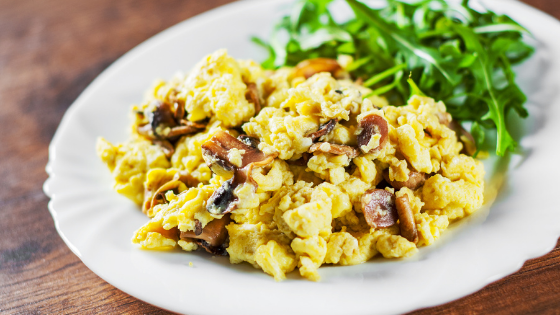
Last in our installment of high-protein foods is a breakfast staple, eggs. A single, large, hard-boiled egg contains 78 calories and packs six grams of protein, proving once again that sometimes the best things come in small packages. Inexpensive and easy-to-prepare, eggs yield a number of quality health benefits that go beyond just their high protein content.
Per Healthline, eggs are rich sources of selenium, vitamin D, B6, B12 and several minerals like zinc, iron and copper. Egg yolks are also rich in nutrients as well as vitamins A, D, E and K.
If calorie intake is a concern, then straining out the yolk and consuming egg whites is a great option. The yolks contain more calories (55, raw) than egg whites (17, raw). Additionally, egg whites contain significantly less fat than the yolk as the yolk makes up most of the egg’s fat content.
Some brands of egg even contain omega-3 fatty acids. But, this entirely depends on what the chickens have been fed, so make sure you check the box first. Overall, eggs are a ‘complete’ source of protein that contain all nine essential amino acids and many other significant health benefits.
Other High-Protein Options for Seniors
While lean meats, fish, dairy and eggs are all great sources of protein, there are plenty of other plant-based, vegan-friendly options out there as well. Protein is often a concern when it comes to vegetarian diets, but a well-planned vegetarian diet provides you sufficient amounts of all the nutrients you need, including protein!
All of these foods contain nutrients seniors need most, and for those of you looking for a plant-based, protein-packed alternative to meat, here are just some of our favorites:
Tofu and Edamame
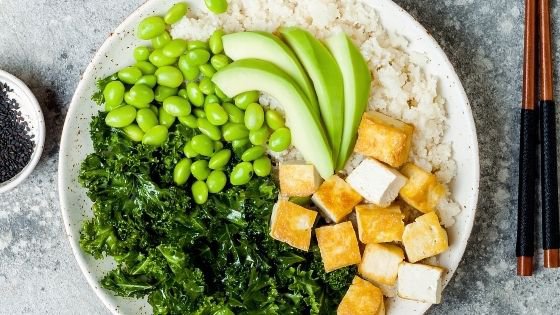
Scrumptious soybean options are a great plant-based addition to any diet in need of some protein. Considered a whole source of protein, soybeans provide the body with all the amino acids it needs.
Tofu is made from soybean curds that are pressed together, similar to the process in which cheese is made. While it does not have much taste, tofu can easily absorb the flavor of the ingredients in which its prepared. Per ½ cup, tofu contains about 94 calories, six grams of fat and a solid 10 grams of protein. Tofu is also a great source of iron, magnesium and calcium.
Edamame are immature soybeans that have a slightly grassy but sweet taste. Edamame should be consumed steamed or boiled and are also great additions to soups and salads. In a one cup serving, edamame has 189 calories, eight grams of fat and a healthy 17 grams of protein. These little beans are also good sources of B vitamins, vitamin C, iron and magnesium.
Lentils
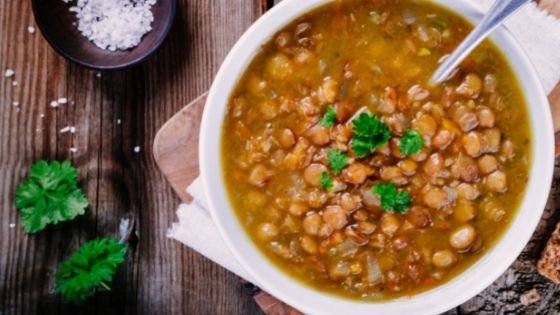
Next on the list of meat-free protein options are the nutritional powerhouse, lentils. These seeds pack a huge nutritional punch and make a great addition to any diet, protein-oriented or not.
A one cup serving of lentils yields 289 calories, 0.8 grams of fat and a whopping 18 grams of protein. But, that’s not all. Lentils are excellent sources of potassium, iron, fiber, B vitamins, magnesium and antioxidants. According to healthline.com, the type of fiber found in lentils feed good bacteria in your colon to promote a healthy gut.
Chickpeas
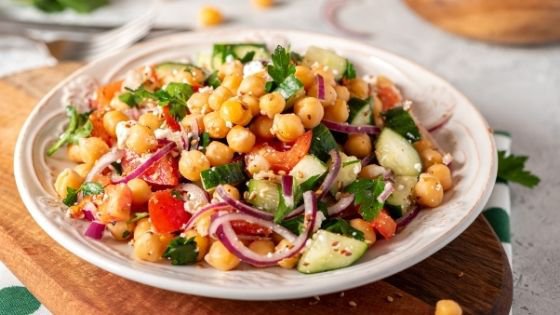
Like beans in general, chickpeas (also known as garbanzo beans) are excellent sources of proteins and other necessary nutrients. Chickpeas, and the nutrients they contain, are great for everything from inflammation to weight management.
In a cooked, one cup serving, chickpeas have 269 calories, four grams of fat and a hearty 15 grams of protein. Chickpeas are also great sources of iron, B vitamins, magnesium, fiber, potassium and folate.
Chickpeas make a great addition to any salad, soup or chili that needs a protein boost. However, it is important that you cook chickpeas. Per Medical News Today, pre-cooked, canned chickpeas contain toxins and ant-nutrients that are reduced upon cooking.
How Much Protein Do Seniors Need?
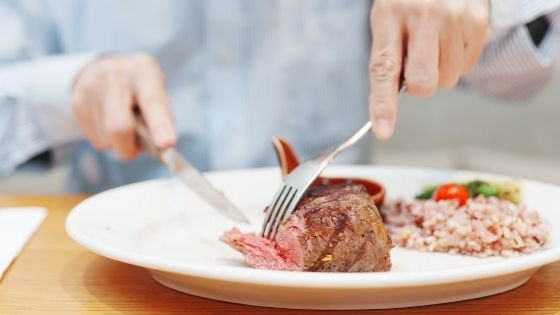
Now that we have covered options for protein, how much protein do you actually need? Some seniors do not get enough protein to maintain their nutritional needs, so it is important to know how much you really need.
So how much protein is right for you?
The RDA for protein for adults is 0.8 grams/kg of body weight. Research suggests that seniors may require higher levels of daily protein in their diet if they are sedentary or trying to manage weight or a chronic condition like diabetes. If adequate levels of protein are not reached, then seniors could be more susceptible to loss of muscle mass, strength and function. In this case, a 1.0-1.25 gram/kg body weight range may be more adequate. This would equal 77-97 grams of protein for a 170 pound person.
Please check with your primary care provider for what level is best for you.
The One Medical blog is published by One Medical, a national, modern primary care practice pairing 24/7 virtual care services with inviting and convenient in-person care at over 100 locations across the U.S. One Medical is on a mission to transform health care for all through a human-centered, technology-powered approach to caring for people at every stage of life.
Any general advice posted on our blog, website, or app is for informational purposes only and is not intended to replace or substitute for any medical or other advice. 1Life Healthcare, Inc. and the One Medical entities make no representations or warranties and expressly disclaim any and all liability concerning any treatment, action by, or effect on any person following the general information offered or provided within or through the blog, website, or app. If you have specific concerns or a situation arises in which you require medical advice, you should consult with an appropriately trained and qualified medical services provider.
